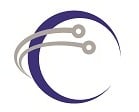
Many of the most influential people in my life have been family members, schoolteachers, or professional "teachers" such as the great Data Warehousing Guru Ralph Kimball. I was thinking about him again last week as I was preparing for a talk and trying to frame my content in the most useful, pragmatic way I could, like he always did. Ralph is retired now, but his book and teachings are still very much alive. Here are some of the thoughts I think about when preparing a talk, inspired in part by Ralph.
Have a pragmatic, useful take.
If I haven't found my own thoughtful "spin" on a topic, I don't feel qualified to discuss the subject. I always try to find a pragmatic technique that the audience can take away and use immediately after the talk, the same way Ralph's talks were always so useful and memorable.
As an example, right before Ralph retired, he did some webinars for Cloudera. There was one about "Data Warehousing for Hadoop Folks" and one on "Hadoop for Data Warehousing Folks," or something along those lines. Those sessions were great examples of his ability to explain complex techniques in usable ways that were fresh, understandable, and new. And if he could work in stories to illuminate the concepts, even better!
Talk about what others won't.
The hardware world, mechanical engineering, the medical industry...with many other fields do a better job talking about project failures. In software and IT talks it is rare to hear in-depth use case details about project failures. We're too busy forging ahead, I guess.
Vendors are notorious for saying yes to any question about functionality or capability even if it means stretching. I know because I've been on the vendor side. But I've also seen how hungry people are to hear details about what technologies DON'T do well and about when to chose one technology over another (from an unbiased point-of-view).
I did a presentation at a Gartner Conference where I was expecting under 100 people, and almost 400 people showed up. Thank goodness it was a large enough room. The topic was the draw: an honest talk about when and how to use RDBMS, column-stores, Hadoop, and the different styles of NoSQL depending on the data, access patterns, queries, read vs write load, schema change frequency, joins, etc. The key was answering questions about what each technology did NOT do well.
Make people think.
Apply new models to old thinking when the old thinking is still true. John Schmidt and I did this with our Lean Integration book. Prior to Eric Ries' bestseller, The Lean Startup, we saw that Lean provided a super teachable model for thinking about the software and IT projects that face us. The simple tools that Lean brings to the equation allow us to decompose complex problems into bite-sized pieces, and most importantly focus on delivering customer value. When I can get a room thinking about their own situations and how and where to apply some of these thoughts, I know the audience is engaged.
Don't try to be funny.
I love to laugh, but whenever I have tried to consciously pre-incorporate jokes or humor, it falls flat. On the other hand, allowing humor to come spontaneously works just fine. If some presentations are laughless, that's okay! As long as the talk wasn't boring and uninformative. Just be authentic, and let the humor flow on its own.

Posted by PDI Marketing Team
Pacific Data Integrators Offers Unique Data Solutions Leveraging AI/ML, Large Language Models (Open AI: GPT-4, Meta: Llama2, Databricks: Dolly), Cloud, Data Management and Analytics Technologies, Helping Leading Organizations Solve Their Critical Business Challenges, Drive Data Driven Insights, Improve Decision-Making, and Achieve Business Objectives.




